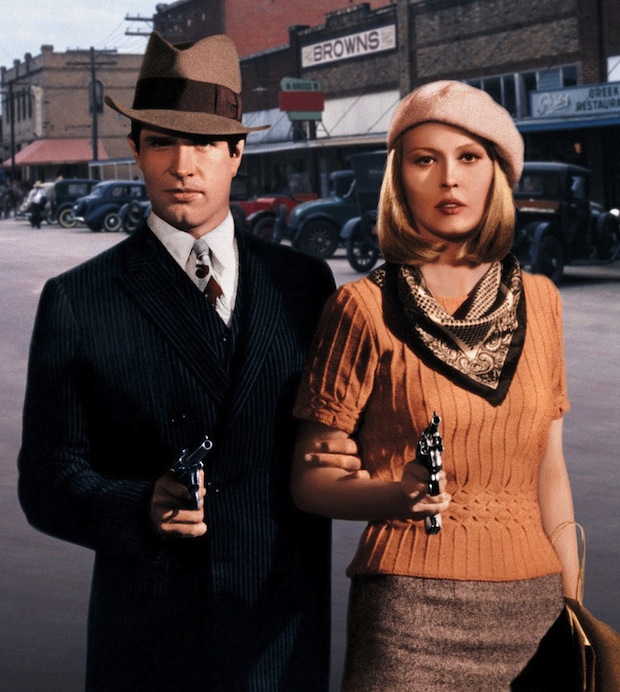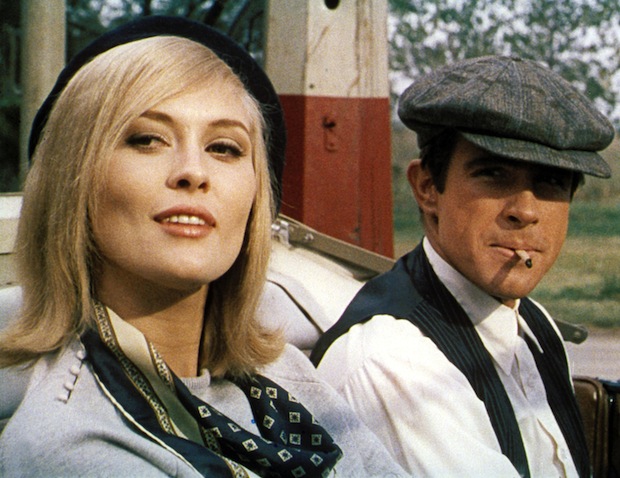 Everyone has their heroes, exemplars by which we strive to live our lives. As we grow up, those heroes take on many forms: from the brightly colored pages of comic books to movie stars to members of our own families. As a culture, we’ve also adopted heroes that change from decade to decade, reflecting the zeitgeist of their various eras. When things are going well for America, the heroes tend to reflect values in keeping with the highest moral turpitude. However, there are instances, harsher times, in which our heroes are those who operate by their own personal code of ethics that may exists outside the black-and-white boundaries of right and wrong.
Everyone has their heroes, exemplars by which we strive to live our lives. As we grow up, those heroes take on many forms: from the brightly colored pages of comic books to movie stars to members of our own families. As a culture, we’ve also adopted heroes that change from decade to decade, reflecting the zeitgeist of their various eras. When things are going well for America, the heroes tend to reflect values in keeping with the highest moral turpitude. However, there are instances, harsher times, in which our heroes are those who operate by their own personal code of ethics that may exists outside the black-and-white boundaries of right and wrong.
The overwhelming rise in poverty and seeming lack of mobilization of our own government to turn the tide of economic downturn during The Great Depression created an atmosphere of contempt for “the system.” As desperation often does, the climate gave rise to spree criminals the likes of which had not been seen since the days of the old west. John Dillinger, Baby Face Nelson, and Bonnie and Clyde Barrow began robbing banks across the country, often leaving a trail of bodies behind them. Yet somehow, the general populous did not scorn them nearly as much as they admired them.
The devastatingly ill-fated romance between the latter outlaw couple became the stuff of folklore. In 1967, director Arthur Penn gave us Bonnie and Clyde, the cinematic retelling of this dangerous love affair/crime wave starring Warren Beatty and Faye Dunaway. The movie is gorgeously shot, superbly performed, and creates a nice balance between the thrill of the outlaw lifestyle and digging into the psychological and environmental motivations for the couple’s actions. These insights begin even as the opening credits are still rolling.
Penn opts to open the film with snapshots of young Bonnie Parker and Clyde Barrow, and not simply to remind the audience of the plot’s true story roots. These images reflect the arid, dusty, desolate landscapes that typified The Great Depression. When the short captions appear, serving as further prologues for these characters, they specifically mention what their occupation history was before turning to crime. It seems such a minor choice, but it speaks specifically to the circumstances that provided the catalyst for their folk hero ascension.
What made Bonnie and Clyde so amiable in the eyes of the public, or at least what served as a major mitigating factor in the judgment of their actions, was that they were so in love.  They were young lovers who thrived despite the socioeconomic odds they faced. They were basically a gun-toting Romeo and Juliet. Penn’s film certainly plays us this aspect. Right after telling Bonnie he cut off two toes to escape work detail, another nod to the abject economic conditions of the era, Clyde proceeds to rob a bank just to impress her. His career as a criminal was just as motivated by boyish adoration as it was the financial crisis. Even their bloody demise, especially given the way in which Penn shoots it, is oddly romantic.
They were young lovers who thrived despite the socioeconomic odds they faced. They were basically a gun-toting Romeo and Juliet. Penn’s film certainly plays us this aspect. Right after telling Bonnie he cut off two toes to escape work detail, another nod to the abject economic conditions of the era, Clyde proceeds to rob a bank just to impress her. His career as a criminal was just as motivated by boyish adoration as it was the financial crisis. Even their bloody demise, especially given the way in which Penn shoots it, is oddly romantic.
Bonnie and Clyde refused to live by the letter of the law, but during a time when bureaucracy and our system of government were perceived to have failed us all. Their larceny was seen as two crazy, mixed-up kids in love leveling the playing field. The scene in which Clyde shoots up a bank foreclosure sign outside a dejected farmer’s house, and then invites the farmer to do the same, speaks perfectly to this perception. Penn’s film actually does a fair job showing Bonnie and Clyde’s darker side so as to not heroicize them as much as did a goodly amount of the public, but he makes no qualms about portraying them as a couple of gorgeous, rustically charming icons either.
Bonnie and Clyde also examines the relationship between the young couple and their dysfunctional families. The idea that looking out for one’s family supersedes the law is precisely the central theme at play in John Hillcoat’s Lawless. Opening today, Lawless is also based on a true story about a family of moonshiners who must contend with law enforcement agents out to shut down their business. The Bondurant boys are not willing to abandon the only surefire moneymaking venture in Depression-era America so they decide to fight. When life becomes as desperate as it was in the 1930s, the line between hero and villain is awfully hard to see.
[Photo Credit: Warner Bros. Pictures]
More:
‘Lawless,’ Moonshining, and America’s Modern Prohibition


